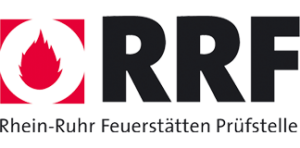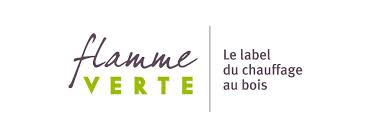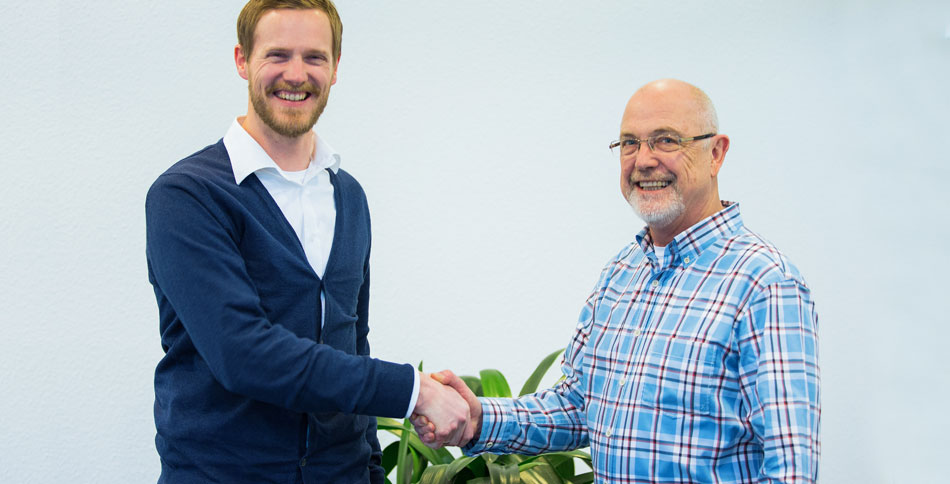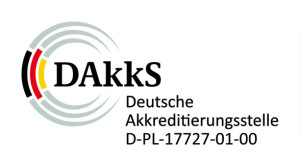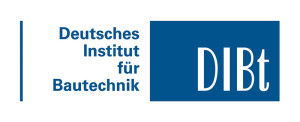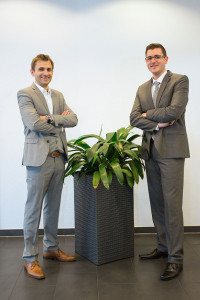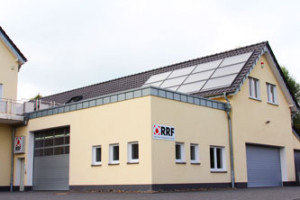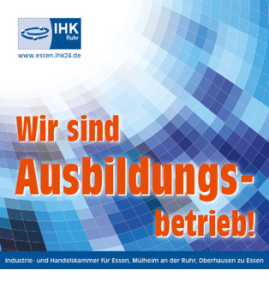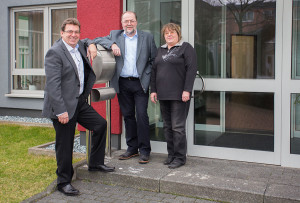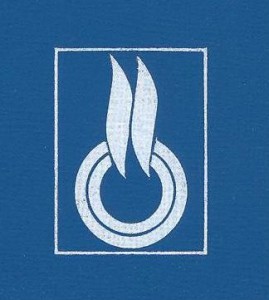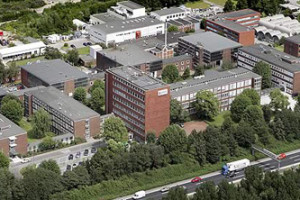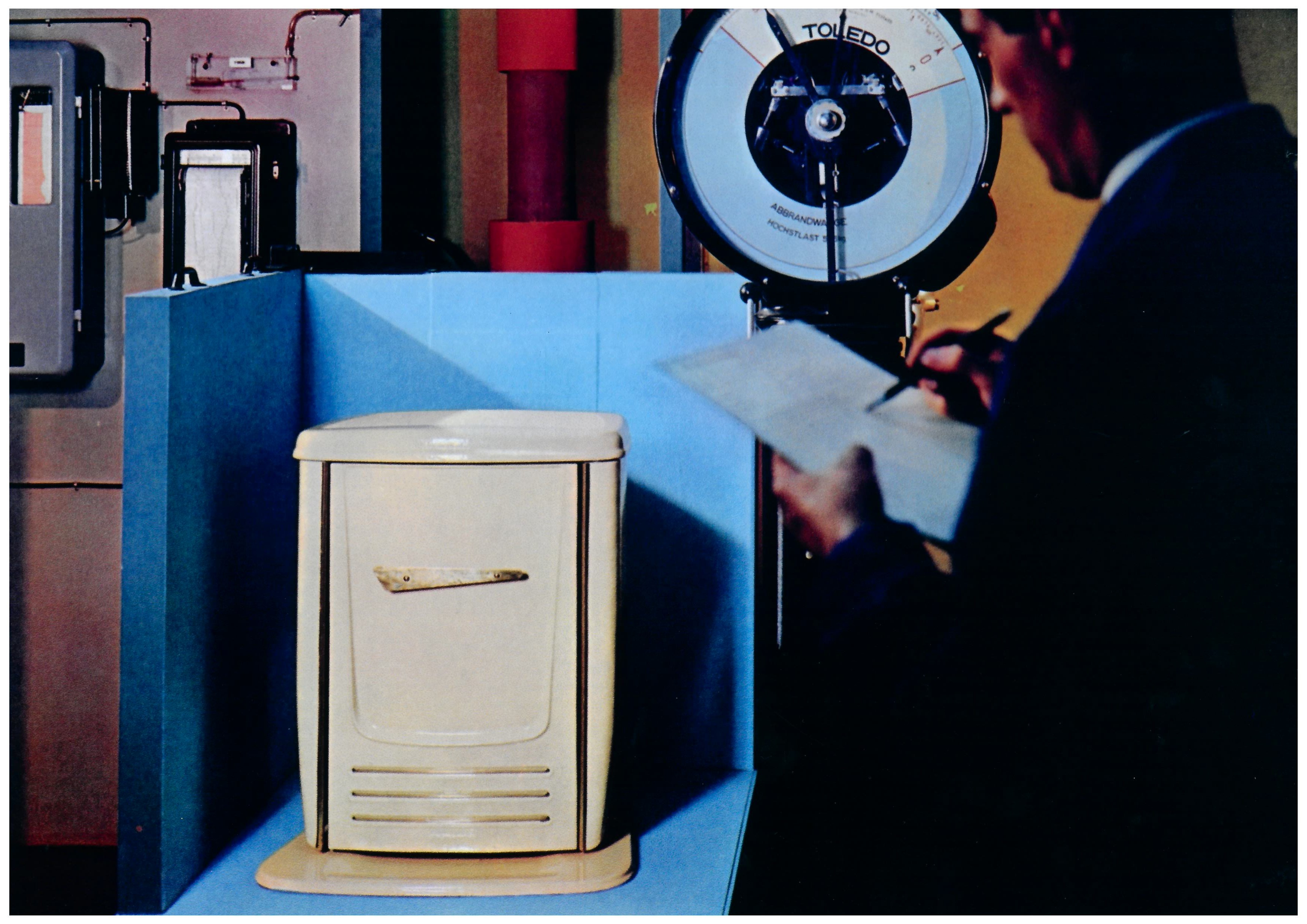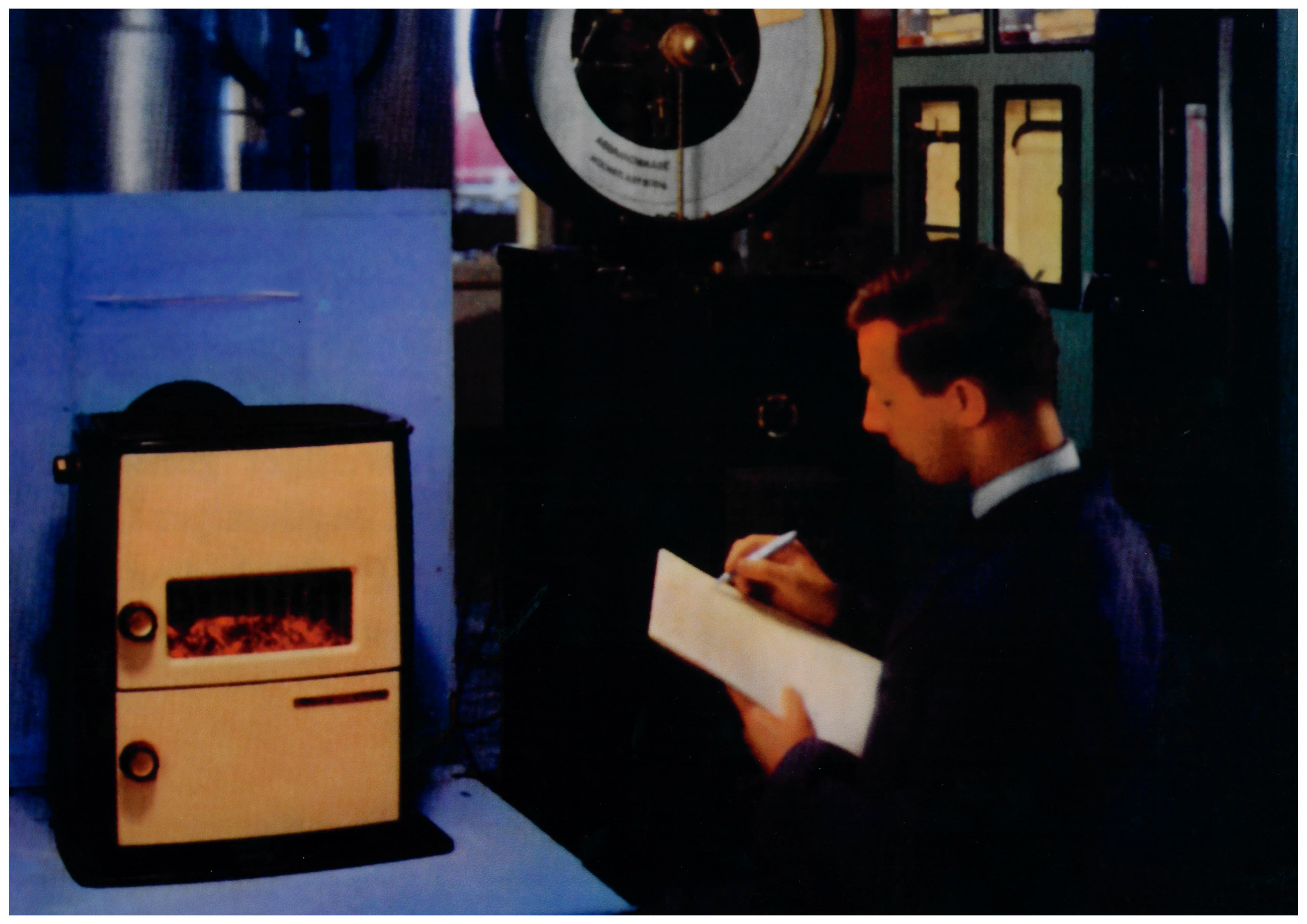History
The Rhein-Ruhr Feuerstätten Prüfstelle has a long – maybe the longest – tradition as a testing laboratory for fireplaces. For more than 80 years our European notified testing laboratory controls the compliance with climate formalities and safety instructions for fireplaces. Since that time the RRF established as a complete offeror for laboratory services and quality inspection on the market. After stable growth, we moved into our new testing laboratory in Oberhausen in 2011.
2018
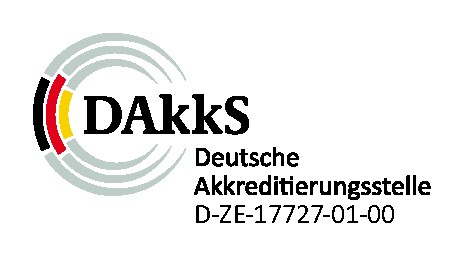 Notification by the supreme building inspectorate as European certification body for flue gas systems and chimneys according to EN ISO / IEC 17065, based on the accreditation by the DAkkS. This notification is the basis for the implementation of factory production control certifications of flue gas systems, chimneys and their accessories (System for evaluation and verification of constancy of performance 2+). Until 2018, the RRF was approved by the DIBt for the above-mentioned construction products as a certification and monitoring body in Germany.
Notification by the supreme building inspectorate as European certification body for flue gas systems and chimneys according to EN ISO / IEC 17065, based on the accreditation by the DAkkS. This notification is the basis for the implementation of factory production control certifications of flue gas systems, chimneys and their accessories (System for evaluation and verification of constancy of performance 2+). Until 2018, the RRF was approved by the DIBt for the above-mentioned construction products as a certification and monitoring body in Germany.
2017
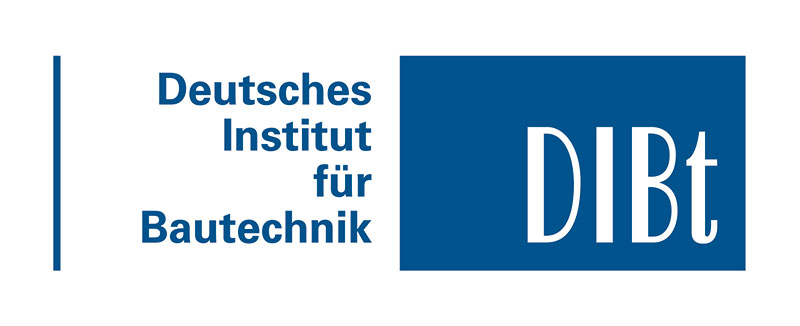 With the notification of 26. September 2017 from the Deutsches Institut für Bautechnik, the RRF is officially approved for further building products. Since we established ourselves on the marked being a testing, monitoring and certification body, we incorporated further important construction products into our portfolio: including room-sealed flue gas collectors both for solid fuels and liquid fuels, exhaust heat exchanger, catalysators, particle interceptor as both chimneys for houses and freestanding chimneys, air-exhaust-systems (LAS) exhaust gas lines and component parts of exhaust systems.
With the notification of 26. September 2017 from the Deutsches Institut für Bautechnik, the RRF is officially approved for further building products. Since we established ourselves on the marked being a testing, monitoring and certification body, we incorporated further important construction products into our portfolio: including room-sealed flue gas collectors both for solid fuels and liquid fuels, exhaust heat exchanger, catalysators, particle interceptor as both chimneys for houses and freestanding chimneys, air-exhaust-systems (LAS) exhaust gas lines and component parts of exhaust systems.
2016
Since 18.05.2016 our laboratory is officially the first German testing laboratory among the Flamme Verte laboratories. To get the approval, laboratories must have a prove of an audit through Eurovent Certiat and prove their suitability in a round robin test. Besides the testing for the Flamme Verte Label, we expanded our testing program and product tests for barbecues (barbecue grills, smokers, fireplace grills, charcoal grills) as well as ethanol fireplaces.
2015
The RRF continuously extends their product portfolio and tests according to EN 14059 (decorative oil lamps) and according to the pressure equipment directive, art.3, paragraph 2.3, module B.
2013
Accreditation by the DAkkS as a testing laboratory according to ISO/IEC 17025. This includes the standards NS 3058 and NS 3059 for Norway and so it´s acknowledged by the Norwegian Supreme Building Authority. The accreditation of the DakkS is also the basis for the notification by European Commission according to Regulation (EU) No. 305/2011, notified body number: NB 1625 as well as DEFRA in Great Britain for tests according to the requirements of the Clean Air Act. Before 2013 a national approval was needed.
2011
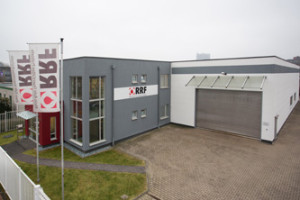 Removal from the testing laboratory in Essen to the laboratory ‘Im Lipperfeld 34b’ in Oberhausen. Besides extensive innovations of the testing process and the testing technology, we extended our capacity of test benches up to 8 and installed a test bench according to DIN EN 15821 for multi-firing sauna stoves fired by natural wood logs.
Removal from the testing laboratory in Essen to the laboratory ‘Im Lipperfeld 34b’ in Oberhausen. Besides extensive innovations of the testing process and the testing technology, we extended our capacity of test benches up to 8 and installed a test bench according to DIN EN 15821 for multi-firing sauna stoves fired by natural wood logs.
2009
Since the founding of the cluster Umwel![]() ttechno-logie.NRW of the Ministry for Climate Protection, Environment, Agriculture, Nature Conservation and Consumer Protection in November 2009 the RRF is in this represented. The aim of the cluster is to build a network to link politics, business, consumer and research effectively and to drive ahead new environmental technologies in NRW and Germany.
ttechno-logie.NRW of the Ministry for Climate Protection, Environment, Agriculture, Nature Conservation and Consumer Protection in November 2009 the RRF is in this represented. The aim of the cluster is to build a network to link politics, business, consumer and research effectively and to drive ahead new environmental technologies in NRW and Germany.
2007–2008
Coming into effect of the harmonized European norms. Because of its skills and many years of experience the RRF is also used for testing from the entire European economic area.
1992
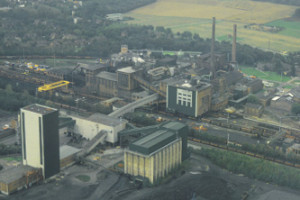 Move into the new laboratory ‘Bendschenweg 36’ in Neukirchen-Vluyn. Parallel to the national standards, the DIN EN-standards (European standards) also became a part of the total range of the fireplaces fired by solid fuels after 1992. The testing body had and still has a significant content – also because of the head of testing laboratory as a chairman. Then and now the standards fill the construction law (fire safety and operating safety of the fireplaces) and the federal emission control act (8. DVO in NRW, 1. BImSchV) with specified requirements and make significant contributions to the usefulness and efficiency of the appliances (energy conservation act).
Move into the new laboratory ‘Bendschenweg 36’ in Neukirchen-Vluyn. Parallel to the national standards, the DIN EN-standards (European standards) also became a part of the total range of the fireplaces fired by solid fuels after 1992. The testing body had and still has a significant content – also because of the head of testing laboratory as a chairman. Then and now the standards fill the construction law (fire safety and operating safety of the fireplaces) and the federal emission control act (8. DVO in NRW, 1. BImSchV) with specified requirements and make significant contributions to the usefulness and efficiency of the appliances (energy conservation act).
1968
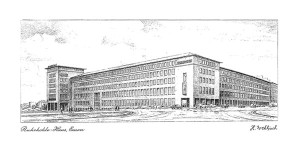 Establishment of the Ruhrkohle AG. The testing body is attributed to the Ruhrkohle-Verkauf GmbH. The objective is to improve the sales on the domestic heating sector through technical improvements of the fireplaces and the operability in close cooperation with the manufacturers and also through research and development projects.
Establishment of the Ruhrkohle AG. The testing body is attributed to the Ruhrkohle-Verkauf GmbH. The objective is to improve the sales on the domestic heating sector through technical improvements of the fireplaces and the operability in close cooperation with the manufacturers and also through research and development projects.
1954
As even soon after the First World War, the testing body also gives attention to the standardization work in cooperation with the manufacturers and all interested parties under control of FNH in the following years. The standards for stoves (DIN 18 891:1984) and open fireplaces (DIN 18 895:1990) are published supervised by the former head of testing laboratory as a chairman. Further standards follow in adaptation to the market development, for example standards for fireplaces fired by wood pellets (DIN 18 894) and room-sealed fireplaces (DIN 18 897).
1953
By the approval of the military governments of the western zones, the German standards committee can restart with its work and form the technical standards committee heating, cooking and warming device (FNH). Through the groundwork of the technical committee in 1953, they can already publish the standard sheet DIN 18890 for transportable ceramic continuous burning stoves, DIN 18890 for Kachelgrundöfen DIN 18892 for continuous burning inset appliances and in 1955. The testing body already achieves valuable work.
1948
Acknowledgement as a neutral testing body. The head of testing laboratory became and becomes examined for his qualification of a body of the technical standards committee.
1947
West German stove and cooker factories are being organized firmer by the „Fachverband Heiz- und Kochgeräteindustrie e.V.“ (HKI), Frankfurt/Main. The HKI appoints the “technical committee”, which develops the “building, quality and test regulations for dry cookers of sheet steel” and later the “building, quality and test regulations for iron dry cookers”.
1945
The Rhine-Westphalian coal syndicate is liquidated by the occupying powers, and later the testing body has to be associated with the Ruhrkohlen-Verkaufsgesellschaft GmbH respectively the Ruhrkohlen-Beratung GmbH.
1937
Additionally there is the inspection and further development of inset appliances for Kachelöfen, pan stoves (coppers), bath boilers and boilers.
1936
Move into the new laboratory ‘Gärtnerstraße 3‘ in Essen. Development of the “all burners continuous burning oven“ and the “all burners continuous burning stove”. Experiments in the testing body results in patented furnace design, which is left to the manufacturers for free.
1933
Application for building a laboratory. The testing laboratory’s duty is to develop coal-friendly stoves and cookers as well as consumer-friendly fireplaces by improvements and new techniques in cooperation with the corresponding industry.
1932
Extension of the field of activity by the generation of a testing device for testing domestic roomheaters.
1925
Establishment: Installation of the „thermotechnical department“ for consumer consultation of Ruhr-coal at the Rhine-Westphalian coal syndicate.
